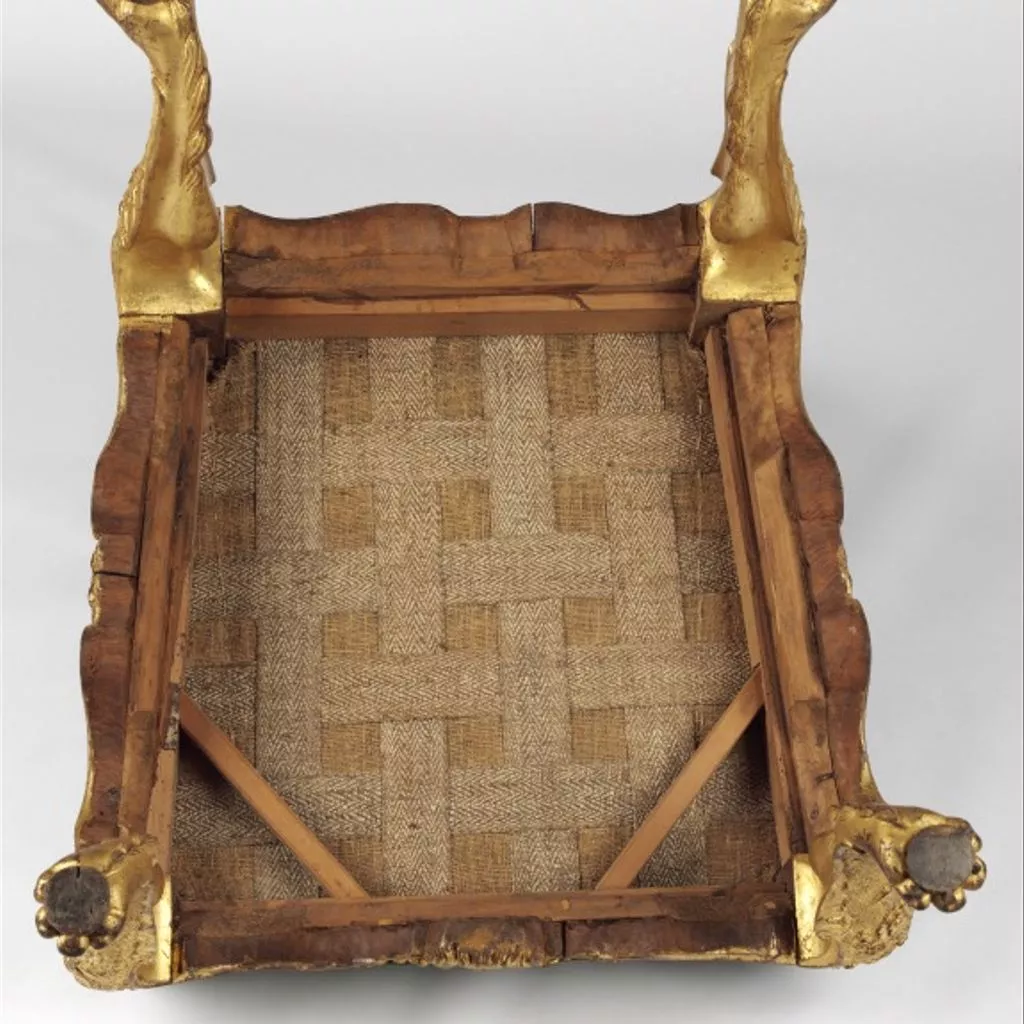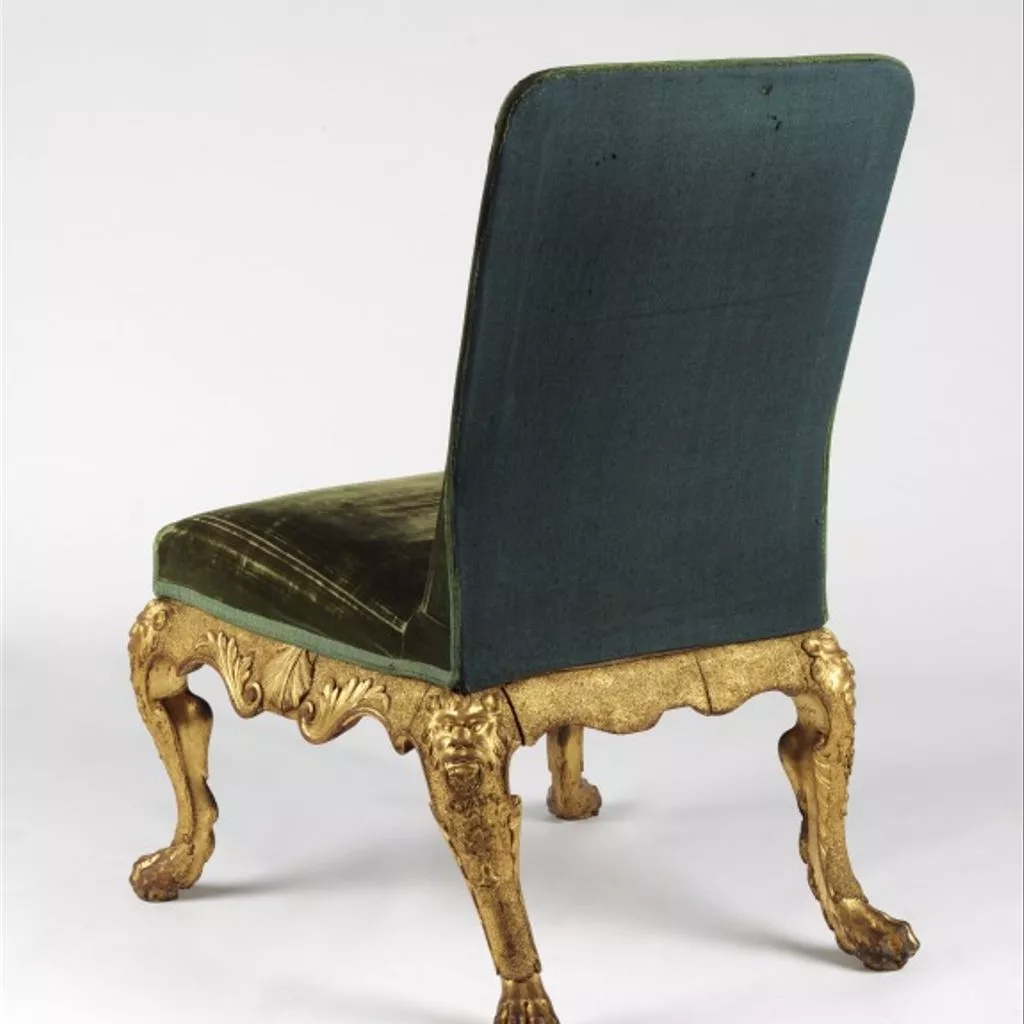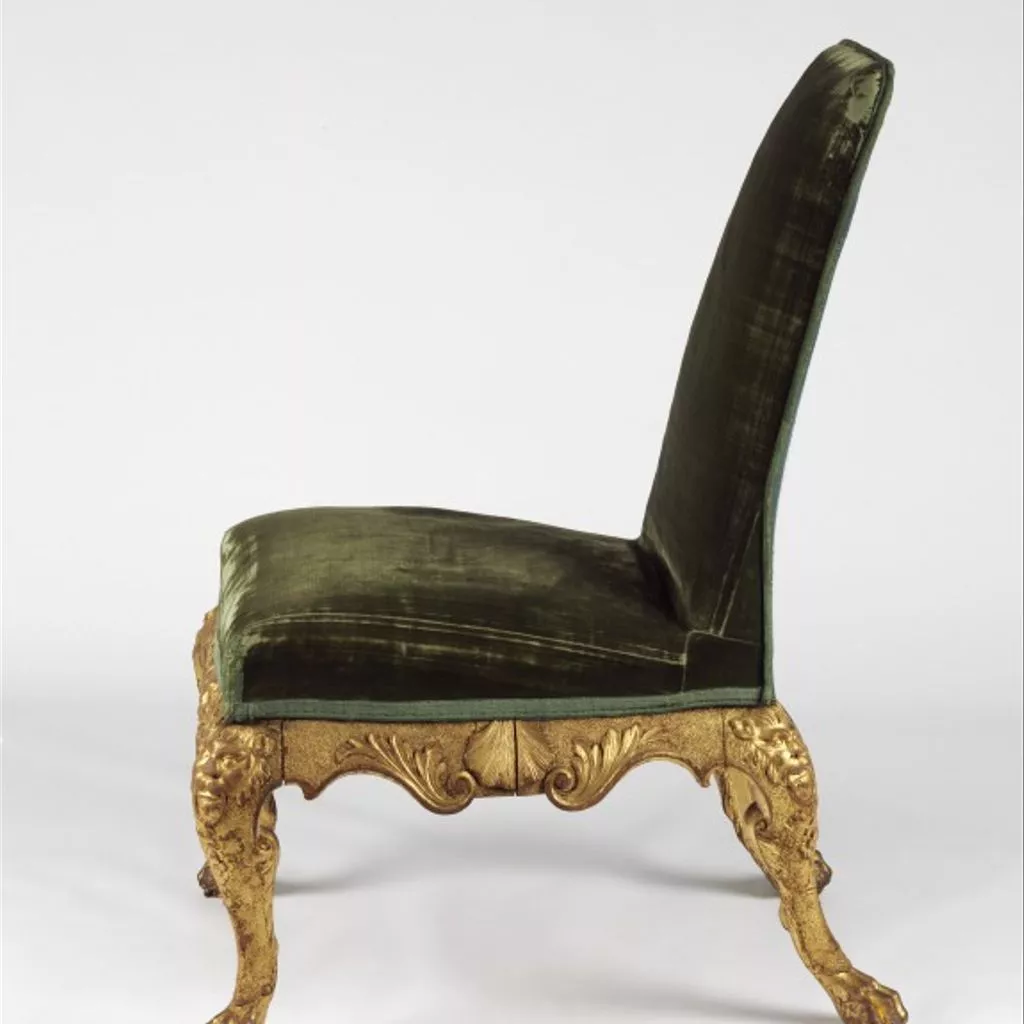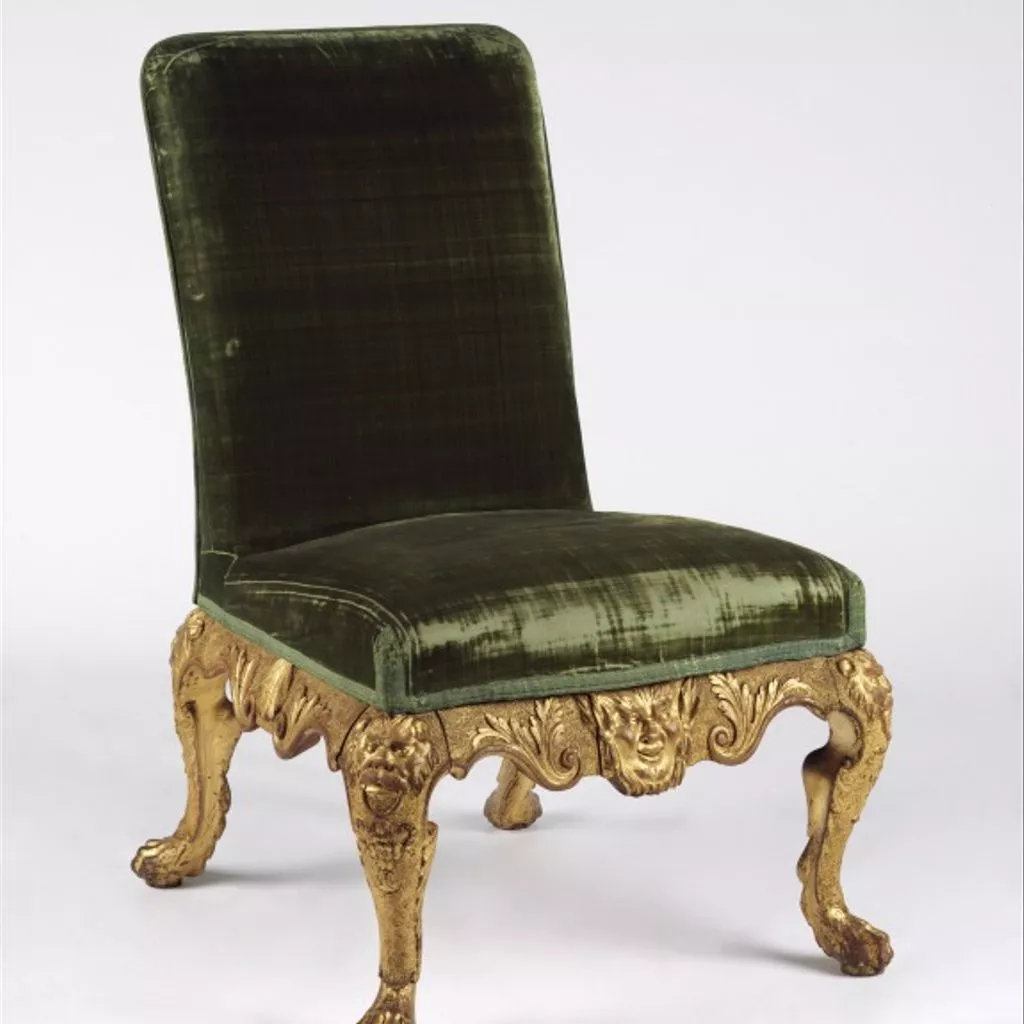Description
Chair, carved and gilded walnut, with green velvet cover trimmed with silk braid, Britain, ca. 1732
Chair
About 1732
Probably by Thomas Roberts Jr (active 1720s–30s)
England (probably London)
Beech, pine and walnut, mordant-gilded, partially over a sanded ground
Upholstery (original): under upholstery with top cover of silk velvet, wool and glazed linen, trimmed with silk braid
Commissioned by Sir Robert Walpole for Houghton Hall, Norfolk
Accepted by HM Government in lieu of Inheritance Tax and allocated to the Victoria and Albert Museum
Museum no. W.25-2002
This chair has been mordant gilded. There is no ground of gesso and bole. Instead, an adhesive was brushed directly onto the wood and the gold leaf laid on top while the surface was still tacky. The adhesive is ochre-coloured oil ‘size’. In some areas, sand has been used under the gilding to accentuate the superb carving.
[01/12/2012]
This is one of a large set of chairs that were made to furnish the main state apartment at Houghton Hall in Norfolk. Houghton was built between 1722 and 1735 for Sir Robert Walpole (1676-1745), England’s first prime minister. The first designs for Houghton were made by the architect James Gibbs in 1722. William Kent, who was establishing himself as a architectural decorator in the 1720s, took over decoration and furnishing of the main floor of the house in 1725. The chairs, with their impressive sculptural carving and oil gilded frames, are likely to have been designed by a chair-maker working under Kent's direction. They are very unusual in that they retain their original structural upholstery, and as such offer very important and interesting evidence of the methods of chairmaking and upholstery that were current in London workshops of the 1730s.
Chair, the back rectangular with rounded top corners; cabriole front legs and heavily raked back legs terminating in paw feet, the top of the legs carved with lion masks; the deep seat rails curved in profile and carved in the centre front with a satyr mask and in the centre of the sides with shells, all flanked by scrolling foliage.
The chair is upholstered with a loose cover of green silk velvet, edged with silk braid. This removable cover is kept in place by a series of eyelet holes which hook over metal pegs fitted to the seat rails. Some of the chairs in the set of which this one is a part retain fragmentary evidence of their original silk 'scarves' - silk flaps that hung from the top edge of the back, normally out of sight behind the chairs, but which could be folded over to protect the front of the chair-back when in use. While these protective 'scarves' are mentioned in archival sources, these chairs are the only instance so far identified of surviving evidence of them.
The structural upholstery is of linen webbing, linen (ticking) base cloth, horsehair stuffing, and linen stuffing-covers. The webbing and base cloth is visible only in the seat.
The legs and seat facings are of oil-gilded walnut. In carved areas, the oil gilding has been applied as a layer of ochre-coloured oil or paint brushed directly onto the wood, with gold leaf laid on top. The sanded areas of the frame are gilded over a 'sanded' ground. Coarse sand was laid onto the wooden surface of the chair frame as the first stage of gilding; layers of ochre-coloured paint or oil, followed by gold leaf, were then applied on top of the sand. The use of a sanded ground is unusual on gilded chairs but became common in the 1720s on gilded picture and mirror frames, primarily those made in a William Kent style. On this set of chairs, the contrast between the smooth gilded surface of the carved sections and the duller matt finish of the sanded ground works to throw up the elaborate ornament of the carving.
The use of oil rather than water gilding is unusual in a set of furniture as grand as this one. It is likely that oil gilding was used to relate the chairs to the architectural gilding used elsewhere in the room, which used the same technique.
There have been some later changes to the surface of the chair. Small areas of both carved and sanded wood have been over-painted with bronze paint. In some areas, there is a second layer of sanding which is lifting off the chair. This second layer is found mainly over joints on the chair, and suggests areas where repairs have been made to cover opened cracks in the joints.














